Intel Xeon E-2236 Benchmarks
For this exercise, we are using our legacy Linux-Bench scripts which help us see cross-platform “least common denominator” results we have been using for years as well as several results from our updated Linux-Bench2 scripts. At this point, our benchmarking sessions take days to run and we are generating well over a thousand data points. We are also running workloads for software companies that want to see how their software works on the latest hardware. As a result, this is a small sample of the data we are collecting and can share publicly. Our position is always that we are happy to provide some free data but we also have services to let companies run their own workloads in our lab, such as with our DemoEval service. What we do provide is an extremely controlled environment where we know every step is exactly the same and each run is done in a real-world data center, not a test bench.
We are going to show off a few results, and highlight a number of interesting data points in this article.
Python Linux 4.4.2 Kernel Compile Benchmark
This is one of the most requested benchmarks for STH over the past few years. The task was simple, we have a standard configuration file, the Linux 4.4.2 kernel from kernel.org, and make the standard auto-generated configuration utilizing every thread in the system. We are expressing results in terms of compiles per hour to make the results easier to read:
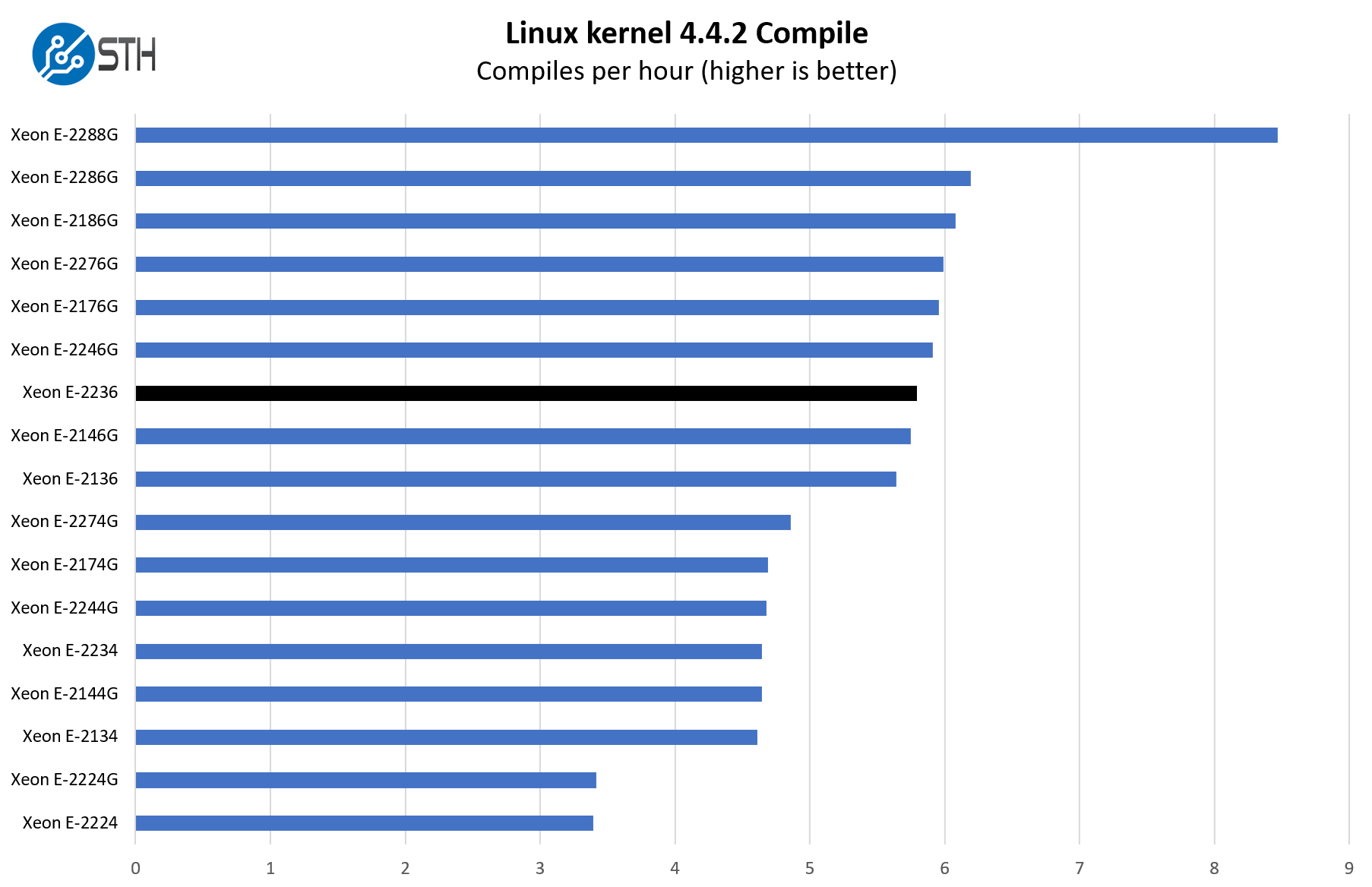
Compared to the previous generation Intel Xeon E-2136 we see a fairly slight uptick in performance. This is certainly not anything upgrade worthy, but as a generational bump in performance that is essentially cost-neutral, it is hard to recommend a Xeon E-2136 these days.
c-ray 1.1 Performance
We have been using c-ray for our performance testing for years now. It is a ray tracing benchmark that is extremely popular to show differences in processors under multi-threaded workloads. We are going to use our 8K results which work well at this end of the performance spectrum.
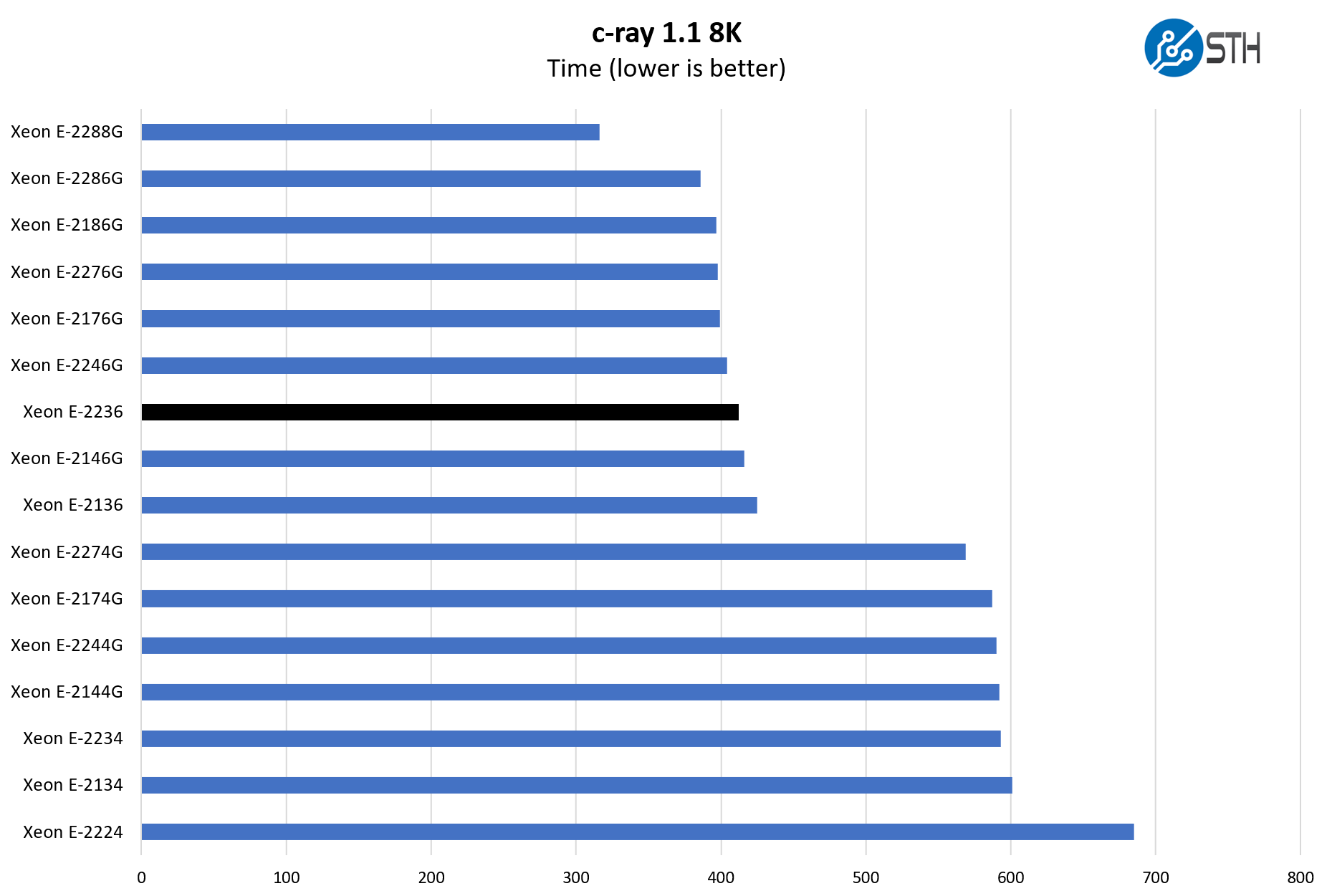
Here we wanted to just show that this is sometimes a bit faster than, and sometimes just behind a Xeon E-2146G which was our top pick in the previous generation. Of course, the Xeon E-2146G has an iGPU but from a CPU performance perspective, they are fairly similar.
7-zip Compression Performance
7-zip is a widely used compression/ decompression program that works cross-platform. We started using the program during our early days with Windows testing. It is now part of Linux-Bench.
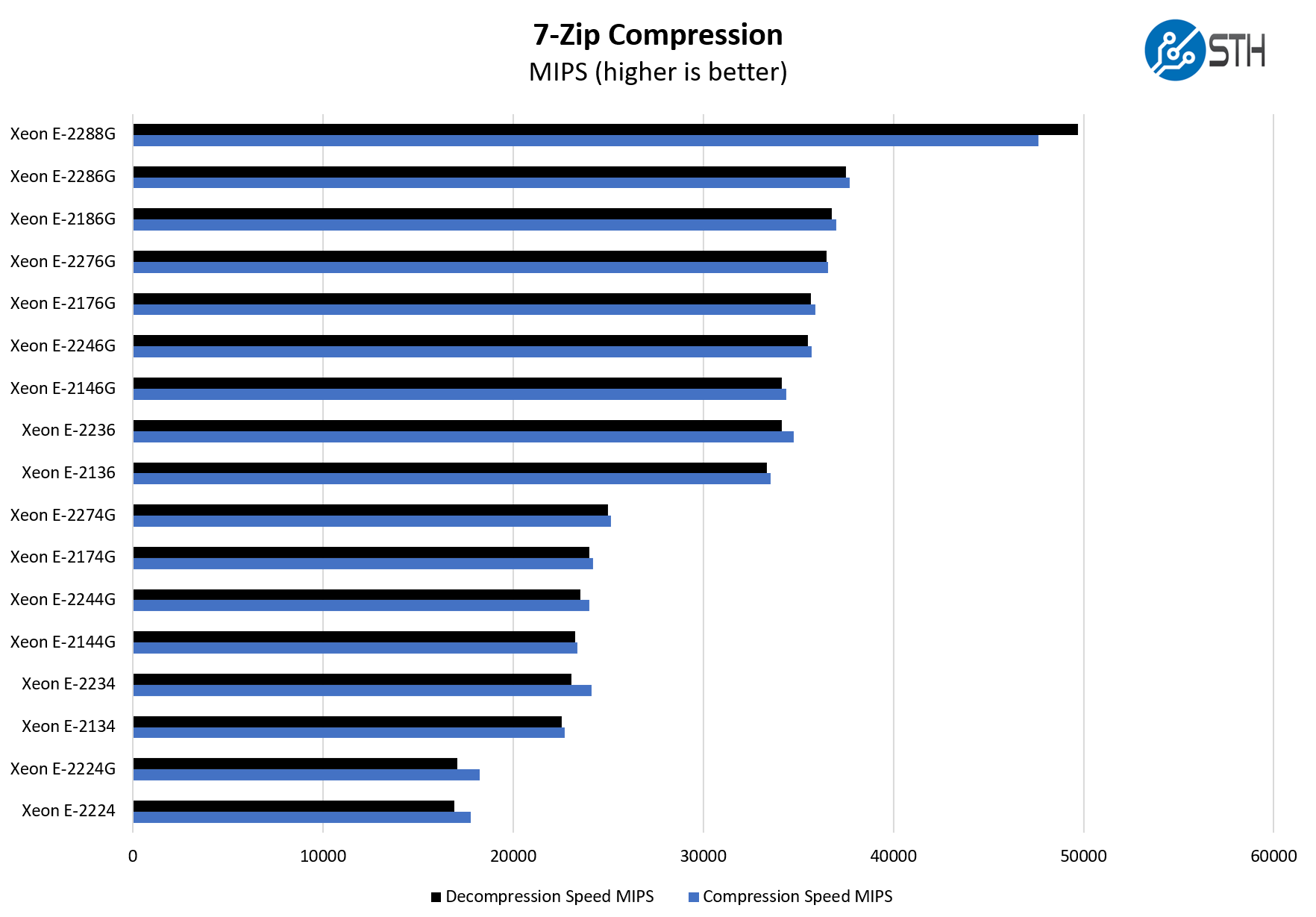
We wanted to focus here on the gap that exists between the Xeon E-2236 and 4-core parts. The Intel Xeon E-2234 is nowhere near as fast as the Xeon E-2236 even though the model numbers are relatively close.
NAMD Performance
NAMD is a molecular modeling benchmark developed by the Theoretical and Computational Biophysics Group in the Beckman Institute for Advanced Science and Technology at the University of Illinois at Urbana-Champaign. More information on the benchmark can be found here. We are going to augment this with GROMACS in the next-generation Linux-Bench in the near future. With GROMACS we have been working hard to support Intel’s Skylake AVX-512 and AVX2 supporting AMD Zen architecture. Here are the comparison results for the legacy data set:
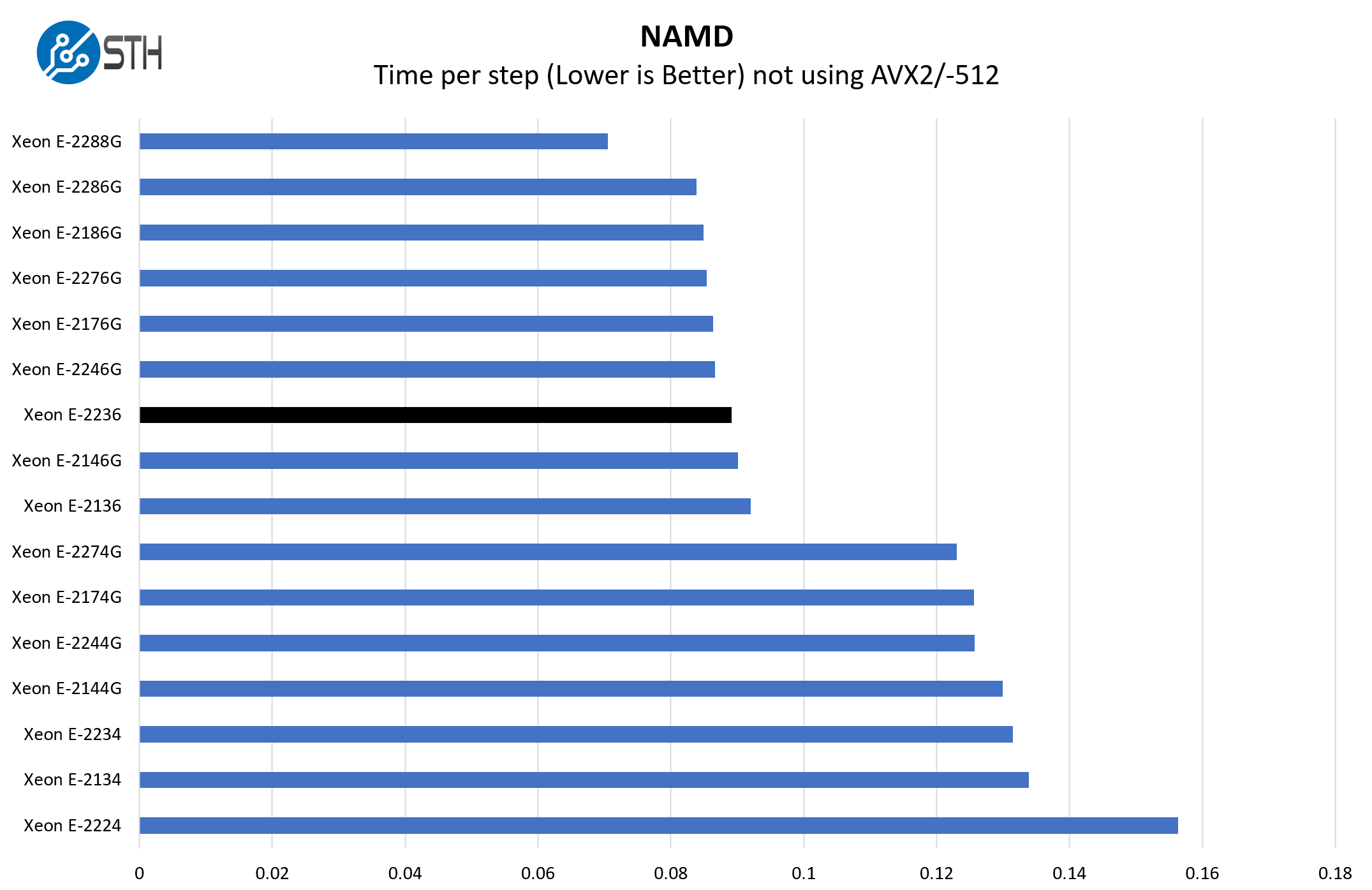
Extending that 4-core discussion further, simply having 50% more cores and caches more than makes up for some nominal clock speed boosts. That gets us to some strange pricing where the Xeon E-2274G is more than 25% more expensive but is a slower processor.
OpenSSL Performance
OpenSSL is widely used to secure communications between servers. This is an important protocol in many server stacks. We first look at our sign tests:
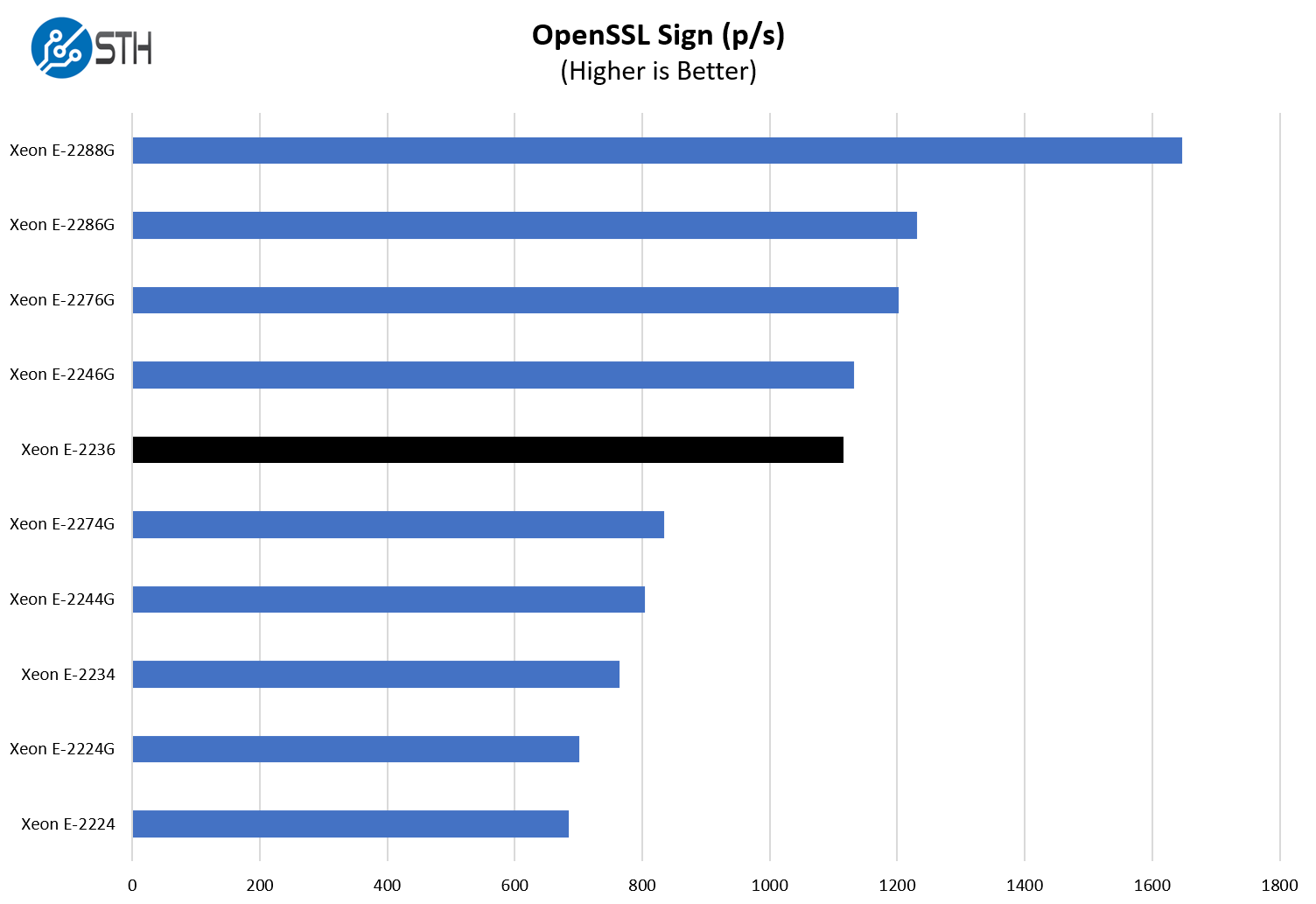
Here are the verify results:
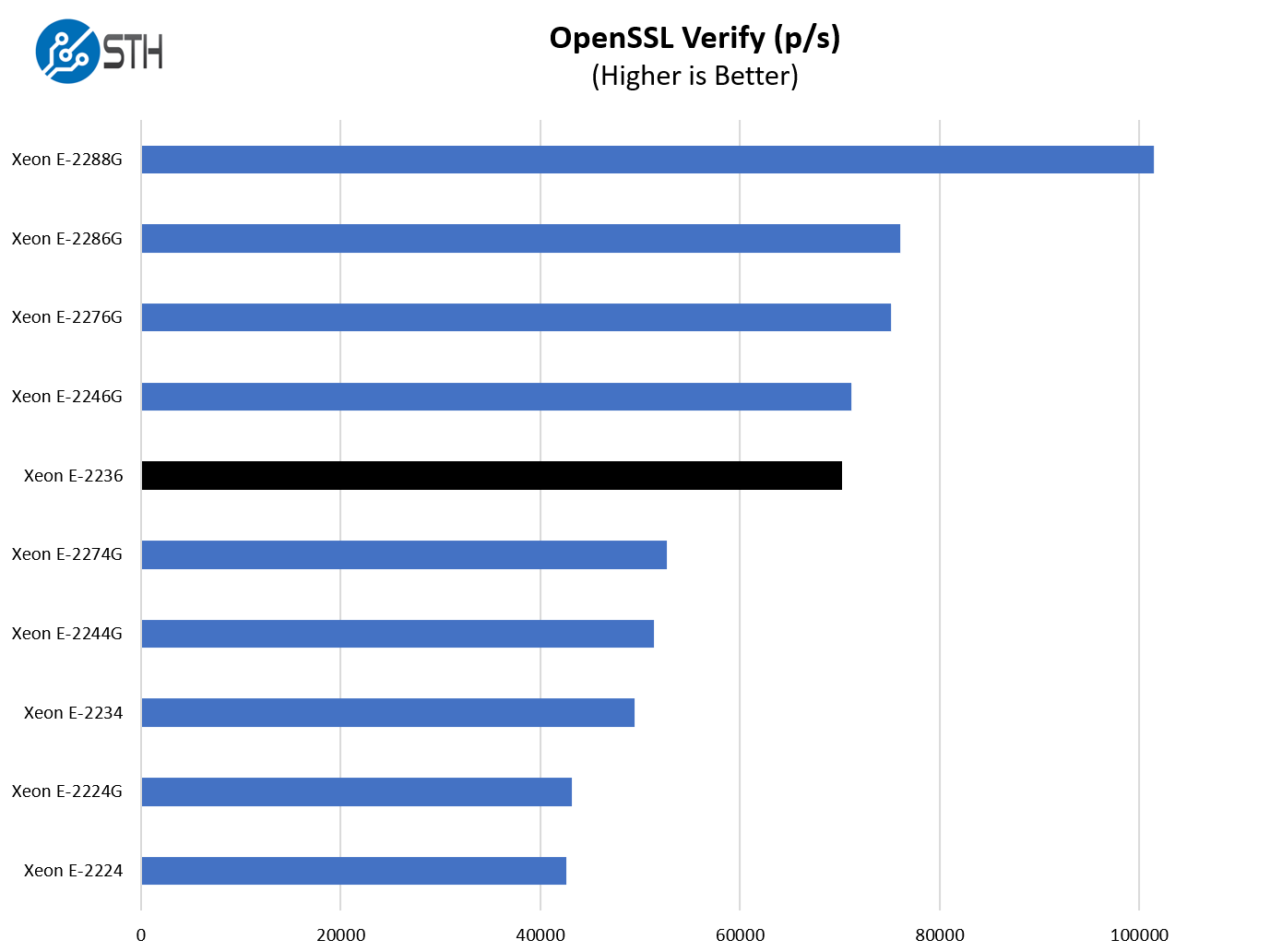
Our top-pick of this generation is the Intel Xeon E-2246G. That part includes an iGPU. If one simply does not need an iGPU for video transcoding or other features, one will notice that in the Xeon E-2200 line, the Xeon E-2236 will instead present the best value.
UnixBench Dhrystone 2 and Whetstone Benchmarks
Some of the longest-running tests at STH are the venerable UnixBench 5.1.3 Dhrystone 2 and Whetstone results. They are certainly aging, however, we constantly get requests for them, and many angry notes when we leave them out. UnixBench is widely used so we are including it in this data set. Here are the Dhrystone 2 results:
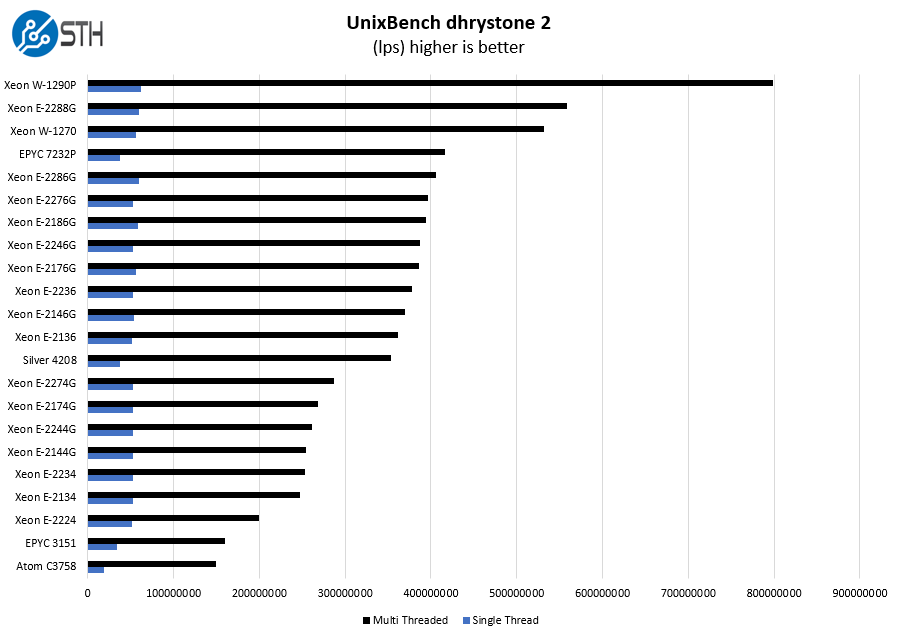
Here are the whetstone results:
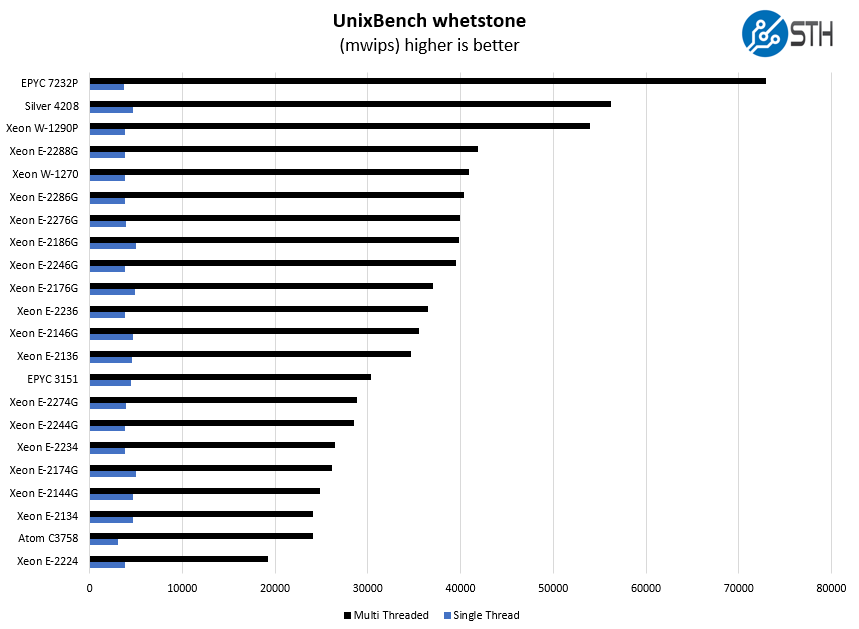
We expanded this a bit to show off newer chips like the Intel Xeon W-1270 and Intel Xeon W-1290P that are more meant for workstation market replacements. As you can see, those chips can be faster, especially the “P” models with more cores and higher TDP. We also have the 8-core Xeon Silver and EPYC 7232P in here just to give some sense of scale beyond the lower-end segment.
GROMACS STH Small AVX2/ AVX-512 Enabled
We have a small GROMACS molecule simulation we previewed in the first AMD EPYC 7601 Linux benchmarks piece. In Linux-Bench2 we are using a “small” test for single and dual-socket capable machines. Our medium test is more appropriate for higher-end dual and quad-socket machines. Our GROMACS test will use the AVX-512 and AVX2 extensions if available.
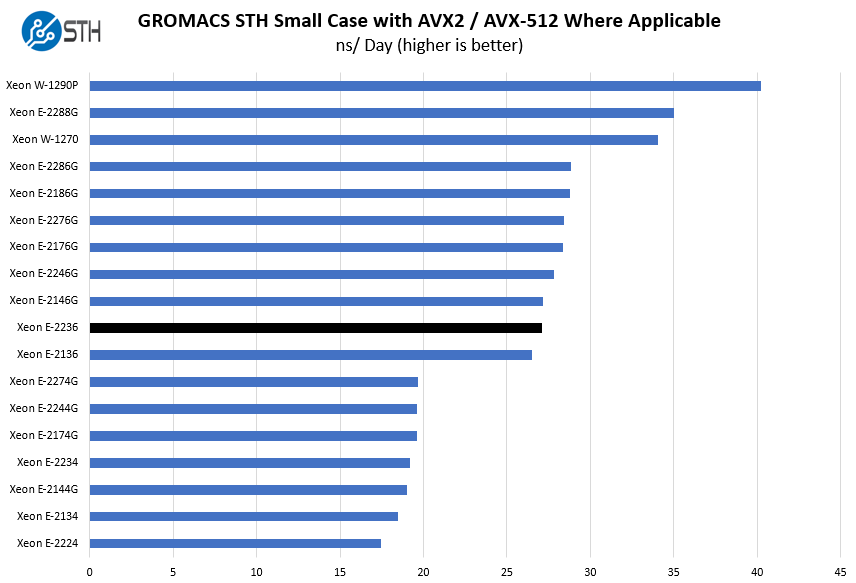
One of the key items that one will see with these parts is a general stratification based on core counts. Here we can clearly see 4, 6, 8, and 10 core offerings. Not all workloads scale linearly, but we see a much bigger change due to core counts than clock speeds in the Xeon E-2100/ E-2200 series.
Chess Benchmarking
Chess is an interesting use case since it has almost unlimited complexity. Over the years, we have received a number of requests to bring back chess benchmarking. We have been profiling systems and are ready to start sharing results:
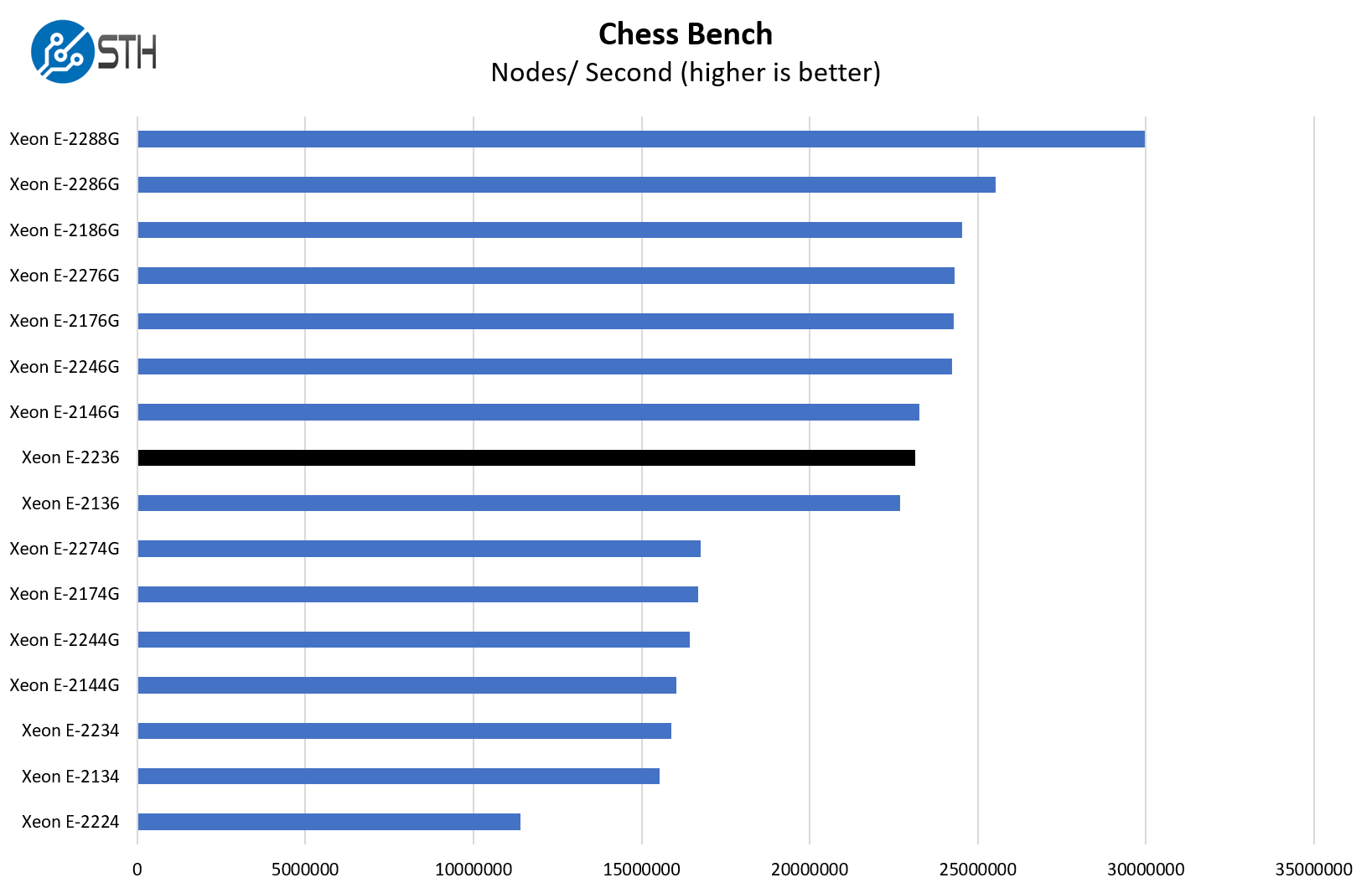
Something that we will quickly note here is that we do not have our Xeon E-2226G numbers. We have run the chip in another system, but we did not want to put a result on these charts that was not from the same platform as all of the rest from this series. In broad terms, that part will fall between the Xeon E-2136 and the Xeon E-2274G but closer to the 6-core parts in most benchmarks as two physical cores are generally better than four SMT threads.
Next, we are going to have power consumption, market positioning, and our final words.




It’s a desktop part. ECC I suppose. When is Intel going to start branding Atoms as Xeons?